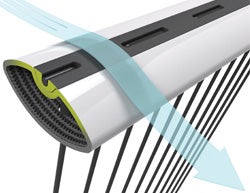Tennis Man
Hall of Fame
I just read the difinition of basalt and it doesn't make sense.
Wikipedia says: "Basalt is used in construction (e.g. as building blocks or in the groundwork), making cobblestones (from columnar basalt) and in making statues. Heating and extruding basalt yields stone wool, an excellent thermal insulator.
Wilson claims "BLX features Basalt which is a natural volcanic rock. Woven into the racquet as fine gold fibers along with Karophite Black it has incredible vibration resistance. With this technology you get a smoother feel with cleaner feedback from the racquet."
How do you get "a smoother feel with cleaner feedback" from a volcanic rock? By touching it?
Wikipedia says: "Basalt is used in construction (e.g. as building blocks or in the groundwork), making cobblestones (from columnar basalt) and in making statues. Heating and extruding basalt yields stone wool, an excellent thermal insulator.
Wilson claims "BLX features Basalt which is a natural volcanic rock. Woven into the racquet as fine gold fibers along with Karophite Black it has incredible vibration resistance. With this technology you get a smoother feel with cleaner feedback from the racquet."
How do you get "a smoother feel with cleaner feedback" from a volcanic rock? By touching it?



